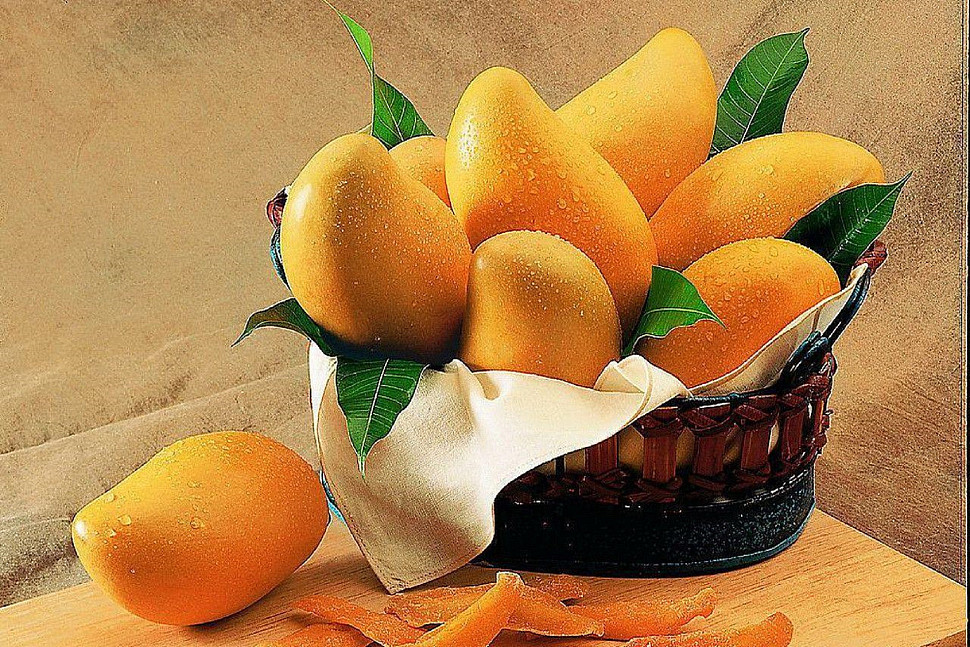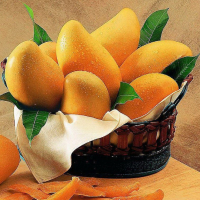
Kesar mango
Embark on a flavorful journey with the Kesar mango, a variety revered for its rich taste and vibrant color. Known as the "Queen of Mangoes," the Kesar mango offers a unique combination of sweetness and spice, making it a favorite among mango connoisseurs. In this blog, we'll explore the origins, characteristics, and culinary uses of the Kesar mango, a crown jewel among the offerings at PlantOGram.
Origins & History:
- Royal Roots: Originating from the Saurashtra region of Gujarat, India, Kesar mangoes have a regal history. They were first grown in the royal orchards of Junagadh, earning their name 'Kesar' due to their saffron-colored pulp.
- Geographical Significance: The unique climate and soil of this region contribute to the distinct flavor profile of Kesar mangoes, making them highly sought after.
Characteristics of Kesar Mango:
- Appearance: Kesar mangoes are known for their bright orange color and smooth, unblemished skin.
- Flavor and Aroma: They offer a sweet taste with a hint of spice, complemented by a strong, pleasant aroma.
- Texture: The pulp is smooth and buttery, with a fiberless quality that enhances the eating experience.
Culinary Uses:
- Versatile Ingredient: Kesar mangoes are perfect for a variety of dishes, from traditional Indian sweets like 'Aamras' to contemporary desserts like mango cheesecakes.
- Beverages and Smoothies: Their rich flavor makes them ideal for smoothies, lassi, and other refreshing beverages.
Heatlh Benefits:
- Nutrient-Rich: Kesar mangoes are a great source of vitamins A and C, and contain antioxidants that boost immunity.
- Diet-Friendly: Their natural sweetness makes them a healthy substitute for artificial sweeteners in various recipes.
Growing Your Own Kesar Mango with PlantOGram:
PlantOGram’s grafted Kesar Mango trees are a marvel of horticulture, offering a faster and more reliable way to enjoy these exquisite fruits. Whether you have a sprawling backyard or a cozy balcony, these versatile trees can adapt to various growing environments.
1. Container Growing for Small Spaces:
- Select the Right Container: Choose a large container with adequate drainage to accommodate the tree's root system.
- Soil and Fertilization: Use a well-draining, fertile potting mix and provide regular fertilization during the growing season.
- Sunlight and Watering: Place the container in a spot that receives full sunlight. Water the plant regularly, ensuring the soil remains moist but not waterlogged.
- Pruning and Maintenance: Regular pruning will keep the tree at a manageable size and encourage better fruit production.
2. In-Ground Cultivation in Favorable Climates:
- Ideal Location: Plant your Kesar Mango tree in a sunny spot, sheltered from strong winds.
- Soil Preparation: The tree thrives in rich, well-draining soil. Amend your garden soil with organic matter if needed.
- Watering Schedule: Water deeply but infrequently, allowing the soil to dry out slightly between waterings.
- Frost Protection: In areas with mild winter climates, protect the young tree from frost.
General Tips for Grafted Kesar Mango Trees:
- Acclimatization: If you live in a cooler climate, gradually acclimate your tree to outdoor conditions in spring.
- Regular Health Checks: Monitor for pests and diseases and treat them promptly to maintain the health of your tree.
- Patience Is Key: Remember, grafted trees bear fruit sooner than seed-grown ones, but patience is still essential. Proper care will reward you with bountiful harvests in the years to come.
By following these tips, you can successfully cultivate your own Kesar Mango tree, regardless of your living situation. PlantOGram’s grafted varieties are particularly well-suited to diverse growing conditions, ensuring that the joy of harvesting home-grown Kesar Mangoes is accessible to everyone.

